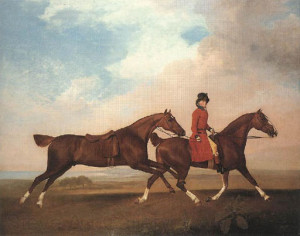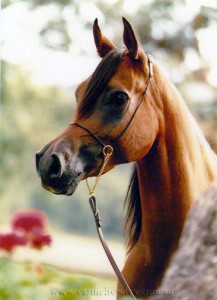LIFE WITH FADS AND TRENDS – Carmel Rowley

As we go through life sooner or later most of us will succumb to a fad, whether it’s the latest fashion, hairstyle or food. Personally, I find fads a fascinating topic. So, what’s the difference between a fad and a trend? It seems nothing in modern life escapes the influence of fads; fashion, food, music, diet, exercise, books, hairstyles, slang words, movies, furniture, places to visit, even children’s names.
Wikipedia, en.wikipedia.org states that a fad is any form of behaviour that develops among a large population and is collectively followed with enthusiasm for some period. A fad is said to catch on when the number of people adopting it begins to increase rapidly. The behaviour will normally fade quickly once the perception of novelty is gone. Apart from the general novelty, fads may be driven by mass media programming, emotional excitement, peer pressure, or even a desire to be outside social norms.
Though the term trend may be used with fad, a fad is generally said to be a fleeting, while a trend is considered to be a behaviour that evolves into a permanent change. Pretty much like social media.
In the 1950’s, the beatnik movement became a major fad that died out as its original advocates abandoned the movement. Though this fad was short-lived, it’s recognised for giving birth to the hippie movement in the following decade. Many other inspiring social trends followed. Lately all the talk is about Hipsters.
According to Dr. Jack Santino, an expert in popular culture, people who follow fads are not irrational; they simply want to be part of something new and creative, and they feel special when they are part of an in-group. Dr. Santino points out that it’s sometimes difficult to see the difference between a fad and a trend. A fad, he says, lasts a very short time and is not terribly important. A social trend lasts a long time and becomes a true part of modern culture. An example of a trend might be the use of personal computers; whereas a fad might be certain types of computer games.
I began to think about some of the other fads and trends around me and being associated with Arabian horses for four decades I’ve seen quite a few fads come and go. Some would be nice to see disappear but sadly they are still with us.
The first fad that comes vividly to mind with Arabian horses would have to be the Panda Eyes fad. I think this is more like a fashion-fad, where breeders/trainers make up the eyes of their Arabian horses with a usually shaved, big, black, shiny half-moon above the upper eye lid when presenting their horses for the show ring. I imagine this practice is to make the horse’s eye appear larger, though I doubt if it would fool many judges or anyone for that matter.
No panda eyes – just lightly oiled velvet black skin.
Specific Arabian bloodlines are also a fashion-fad. Whatever line is consistently winning in the show ring the sires producing these winners are used by breeders to the extreme. Over the years the show halters used on our horses have changed with the current fashion. I would call this a fashion-fad. I had a wall with at least a dozen different styles of show halters hanging on hooks in my back room. These show halters were all the rage at the time they were used. There’s rolled leather, flat leather, macramé, the old Lasma style and Egyptian styles to name a few.
Straight from the paddock –
Now when I think of it, we’ve seen the fad of tails sweeping along the ground and bridle paths trimmed three quarters down an Arabian horse’s neck. And we must not forget our riding attire and how riding coats have changed over the years but this would be classed as a fashion-fad as well.
In the 1800’s and early 1900’s there was quite a fad for docking tails. You see them in older paintings and drawings of hunters, racehorses and carriage horses where the horses are portrayed with docked, or bobbed, tails. In docking the tail, the dock (the bony, muscular length of spine from which the tail hair grows) is cut through and removed, a painful and barbaric process for the horse and one which renders it unable to use the tail to swish flies from its body.

Docked tails depicted in this painting by Stubbs
A part of me has always wondered why so many follow the leader?
Interestingly this behaviour has a name; it’s called the BANDWAGON EFFECT.
The general rule is that conduct or beliefs spread among people, as fads and trends do, with the idea that any individual adopting the fad will become as popular and successful as the people who have already done so.
The bandwagon effect is where the rate of uptake of beliefs, ideas, fads and trends increases the more that they have already been adopted by others. In layman’s term the bandwagon effect refers to people doing certain things because other people are doing them, regardless of their own beliefs, which they may ignore or override. For instance, once a product becomes popular, more people tend to get on the bandwagon” and buy it, too. The bandwagon effect explains why there are fashion trends.
When individuals make rational choices based on the information they receive from others, cascades can quickly form in which people decide to ignore their personal information signals and follow the behaviour of others. Cascades explain why behaviour is fragile—people understand that they are based on very limited information. As a result, fads form easily but are also easily dislodged.
I don’t think there’s an easy answer to fads or trends other than that they are destined to continue. I remember a long list of trends that I debated about its use in my life. Many difficult decisions turned out to be the best choices my husband and I ever made. It was imperative to question how beneficial the fads-trend would be to my personal goals, the many things I loved, followed and worked hard at achieving. Or would this fad or trend have a detrimental effect on what I was working towards.


Leave a Reply